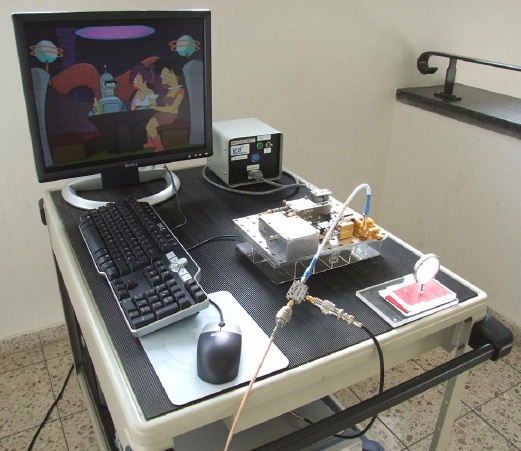As much as people love wireless technology, current systems such as WLAN or Bluetooth have their limits: They transmit the data with clock rates in the gigahertz range at most, a billion vibrations per second.
In order to increase the quantity of transmitted data, especially for things like high-definition wireless video, clock rates need to become much higher.
Terahertz waves (1000 billion vibrations per second) look like the successor to Bluetooth; for short distances, like within rooms. Transmitting power has been an obtsacle to go beyond that.

Engineers and physicists of the Terahertz Communications Lab in Braunschweig, a cooperation of the Physikalisch-Technische Bundesanstalt (PTB) and the Technische Universität Braunschweig, have successfully transmitted a video signal at a frequency of 300 GHz over a distance of more than 22 meters, and have thus demonstrated that the transmission of user data is possible with terahertz waves.
The unit consisted of an autarkic transmitter and detector units based on Schottky diode mixer technology. The system performance was characterized with regard to link budget and noise. For demonstration, analog video signals were used.
C. Jastrow, K. Münter, R. Piesiewicz, T. Kürner, M. Koch and T. Kleine-Ostmann, 300 GHz Transmission System, Electron. Lett. 44, 213-214 (2008) 10.1049/el:20083359






Comments